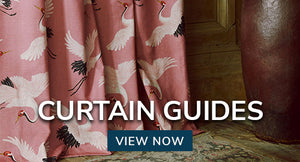Robin Wilson is an eco-friendly interior designer with a penchant for allergy and asthma friendly interiors, furniture and indoor air quality. An asthma and allergy sufferer herself, Robin has used her personal experience to improve the lives of others by founding Robin Wilson Home in 2000. Since then she has designed the Harlem office of President Clinton, the White House Fellows office, as well as private homes and international hotels. So we are proud to bring you the Designer Insights of Robin Wilson.
- Transcript -
1) In your own words describe your unique style and creative aesthetic?
My design aesthetic is based on creating an eco-friendly and hypoallergenic space, which means that we think “less is more” and suggest quality over quantity in a space. We want clients to furnish sustainably, use non-toxic products and to think about the fact that fewer surfaces mean less dust for those who suffer from asthma or allergy conditions.
2) When starting a new project, what is your creative process?
We always listen to the client first, take a tour of the space/review plans, and ask a few questions to understand a client lifestyle – do they entertain? Is their home a retreat? Do they have children or pets? After we understand the basics, we then want to observe their reaction to certain images or colors to further understand their preferences so that we can collaborate more effectively.
3) Out of the creative people you have worked with, who is it that you respect and admire the most?
There are so many living people who are amazing, so I would not want to offend anyone. But there is one person who I wish were still alive to speak with – Paul R. Williams (1894-1980) who was a leading architect of mid-century projects with clients such as Frank Sinatra, Lucille Ball & Desi Arnaz and Bill “Bojangles” Robinson, among his many commercial projects like the LAX Airport or Saks Fifth Avenue in Beverly Hills. He was an African American who did not receive the same acclaim, but he was prolific in his output and often had to draw upside down because of the segregated practices where his clients did not sit next to him. He excelled in spite of societal barriers, and managed to do such amazing work.
4) When looking for inspiration is there a particular thing you do to get inspired?
One of the most exciting things to do is to take a trip to an architecturally significant location – it has been eye-opening to understand how space was used, light was managed and air flowed through homes during an era of grand living, or non-air conditioned spaces. For my NYC clients, I often look at ship building/yacht spaces to understand how to maximize space. Or a quick read of an old magazine will also create an ‘aha’ moment that will be appreciated by a client.
5) What has brought you to this point in your career? And what is your advice for people looking to follow in your footsteps?
Hard work and living by the motto: “What would you attempt to do if you knew you could not fail?” There are a hundred times when I wanted to step off the treadmill of chasing a dream, but each day has brought a new challenge and a renewed focus. I urge anyone entering the design “business” to remember that it is a job, not just drawing and giving creative ideas. You must earn a living and you must be clear about the number of hours it will take to realize a vision. Create a strong A-B-C foundation: attorney, bookkeeper and cashflow!


















































